How to Write Content for Google Featured Snippets
When brands pick up on the opportunity surrounding Google featured snippet blocks they get excited. And so they should. Between organic visibility and brand awareness and authority, there’s a lot of opportunity for brands to capitalize on with these little boxes appearing at the top of the search engine results pages (SERPs). Let’s start by defining Google Featured snippets, because as an agency we’ve seen a few common misconceptions out there.
What are Google Featured Snippet Blocks?
Google featured snippet blocks, also known or referred to as Google answer boxes or Google quick answers, feature content from an organic search result that explains or provides relevant, concise, and specific information directly related to a user’s search query. Here’s an example of Power Digital’s featured snippet for search term “top SEM tools.”
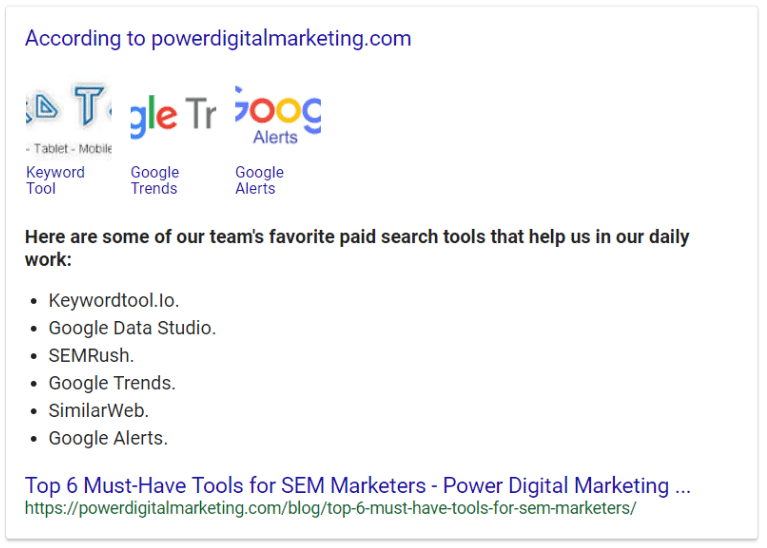
Are Featured Snippets the Same Thing as Google Knowledge Graph Results?
No. A featured snippet result is the answer provided for someone seeking the answer to a question or topic. Featured snippet block results includes the answer which is extracted from a web page, a link to the page, the page’s title, and the page’s URL. Sound familiar? That’s because it’s a standard organic search result simply emphasized with a special layout at the top of the SERPs.
A Knowledge Graph result is often times the answer provided for someone seeking a definition, a math result, a capital city, the language of a country, etc. and differs from featured snippets and standard organic search results because it is not linked to a specific web page or URL.
Here’s an example of a Knowledge Graph result for “Donald trump’s middle name.” You can see there’s simply an answer to the query with no reference to a website or a URL.
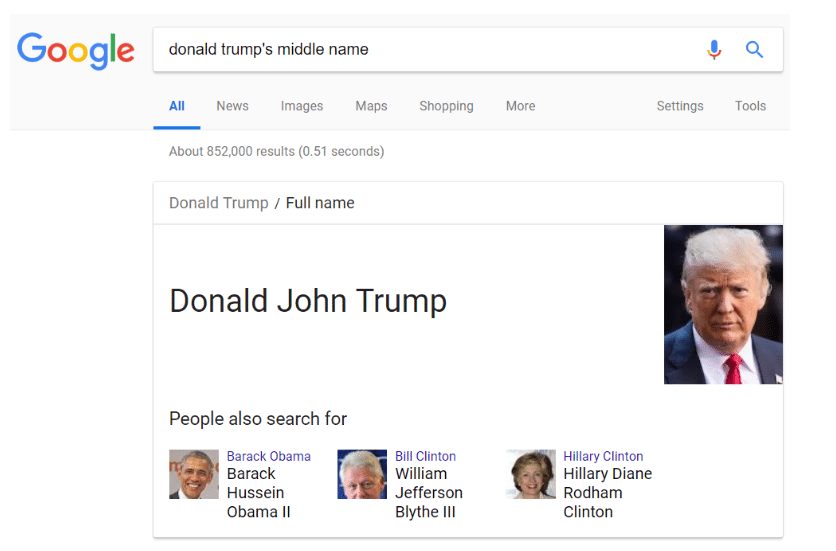
Do Featured Snippets only Appear for Question Based Queries Beginning With “How To” or “What Is?”
No. While a lot of featured snippets are triggered by queries beginning with how and what, there are a lot of featured snippets that are served for other questions such as “can I” or “when was” for example. Here’s a list of key phrases to get you thinking about featured snippet keyword research:
- who
- what
- where
- when
- why
- ways to
- how
- should
- do
- can
- will
- is
- whose
- which
- versus / vs.
But even beyond that, there are a lot of featured snippets that Google serves for non-question based queries as well. Here are a couple examples:
“simple thank you note”
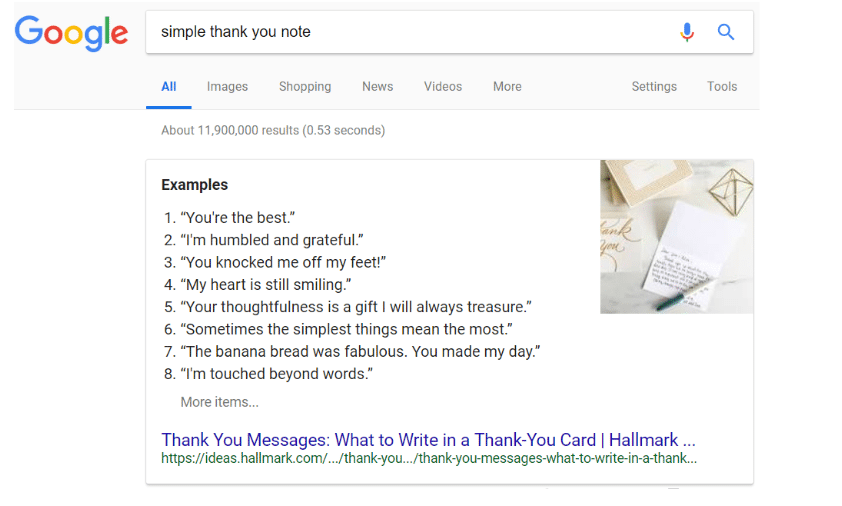
“top brands of jeans in the US”
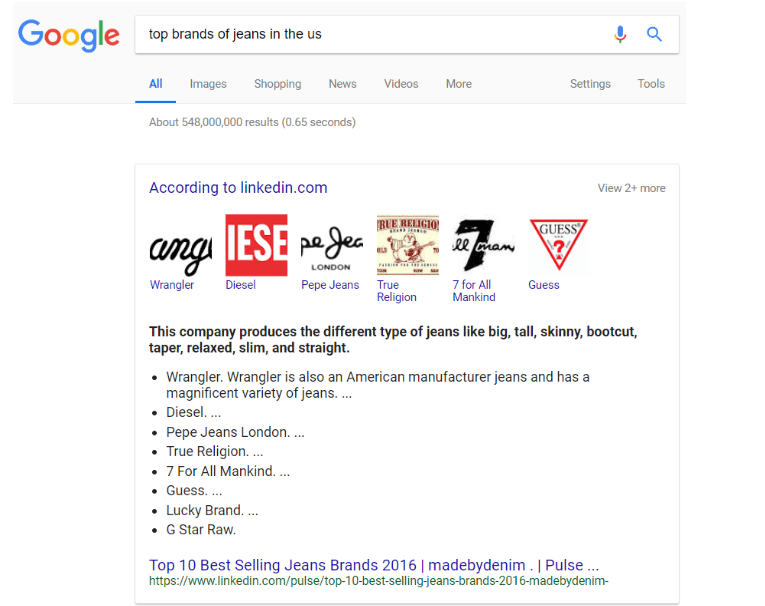
“pub crawl themes”
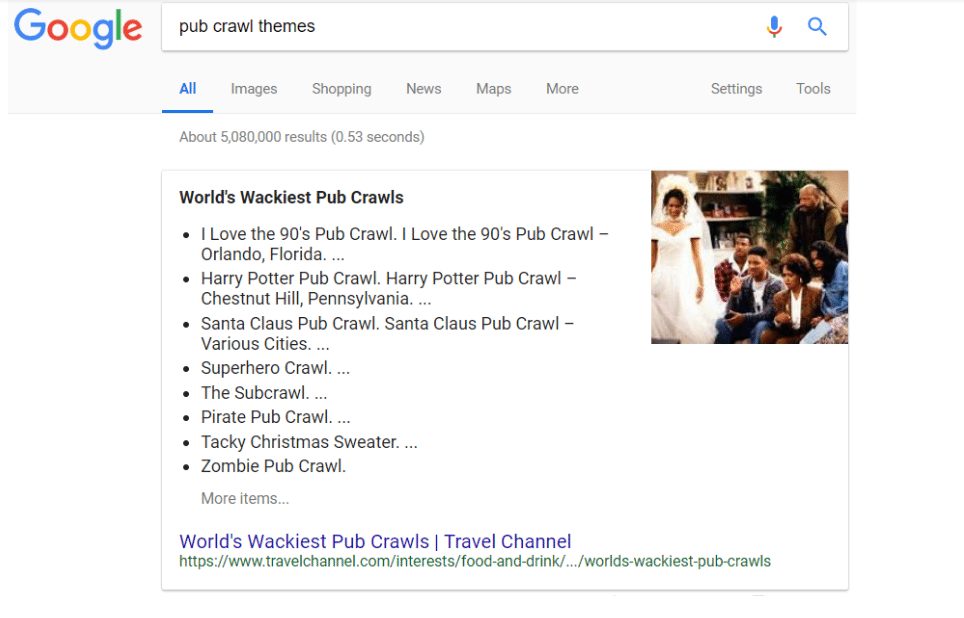
How Do You Start to Formulate a Featured Snippet Specific Strategy?
Picking a well thought out topic rooted in SEO keyword research is important and it’s a great place to start. Check Google Trends to see if the overarching topics you want to write about are trending up or down in search interest. From there, find specific long-tail search queries by using tools such as Google Keyword Planner Tool or Keyword Tool (https://keywordtool.io/).
There are a lot of other key considerations when formulating a featured snippet strategy, though. Content structure is a key factor when aiming to get your content ranked in a featured snippet. According to Moz, 63% of Google featured snippets are from paragraphs of content, while 19% are from lists and 16% are from tables.
Depending on which style of content you’re writing, your content should be structured and optimized a bit differently.
For a listicle style piece of content (e.g. best 5 brands of fair trade coffee, top 10 reasons to invest in SEO), be sure to either number or bullet your “answers” so Google can easily pull those out. This doesn’t mean you can launch a ton of pages with basic bulleted lists and expect to rank well, though. Moz also recommends writing long-form content when writing for featured snippets. If you’re well versed in SEO you likely already know that Google tends to favor longer form content as long as it’s unique and high quality. So with the top 5 coffee brands, for example, you would need to plan on writing at least 200+ words about all five coffee brand on your list to get into that long form range. Also consider making the title of your content the H1 with each coffee brand you’re writing about an H2.
If you’re not writing a listicle and you’re aiming to rank with a paragraph style of featured snippet, long form content is still important, but in addition to that, the “answer” should appear somewhere within your long form content in a very clear and concise way. If you want to play on the safe side, it’s also recommended to restate the question or query you’re trying to rank for followed by the concise answer. This can be done either in your introductory paragraph, or at the end of your content in a summary format.
What Else is Important to Know About a Featured Snippet Strategy?
Featured snippets don’t last forever. Just like traditional SEO optimization, there’s really no set it and forget it. If your optimization strategies work, your featured snippet rankings could last a couple days or a couple months. But even if your site never ranks for a featured snippet you’re targeting, or if you don’t rank very long, optimizing for featured snippets as described in this article means you’re optimizing your content in general. Featured snippets can help increase your brand awareness, digital authority, and chance to rank for voice searches, but if that doesn’t work, your thorough keyword research and long-formwell-structuredd content will still be a great asset to you site.



















